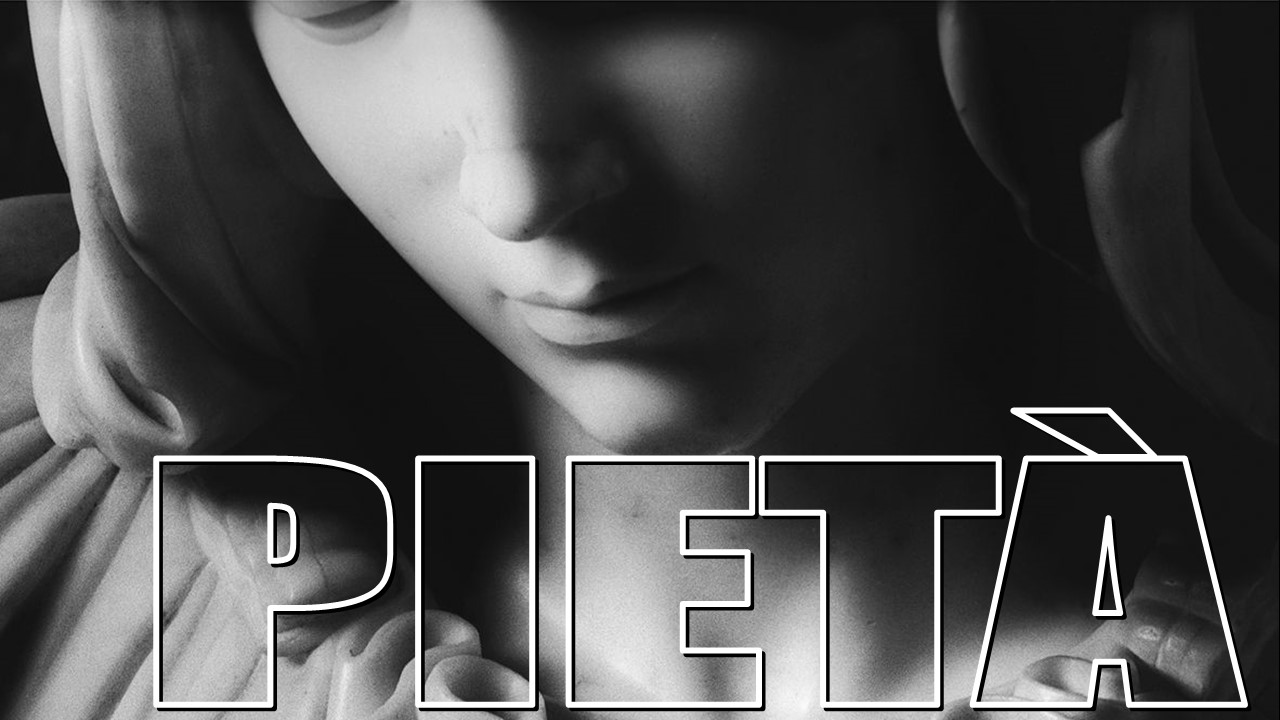Pieta - PowerPoint PPT Presentation
Title:
Pieta
Description:
La Pietà, the Renaissance sculpture, created by a young Michelangelo between 1497 and 1499, depicts the body of Jesus cradled by his mother Mary after the Crucifixion. Carved in Carrara marble, La Pietà can be found in the first chapel to the right of the entrance to St Peter's. It is the only sculpture Michelangelo ever signed – PowerPoint PPT presentation
Number of Views:1
Title: Pieta
1
PIETÀ
2
La Pietà, the Renaissance sculpture, created by a
young Michelangelo between 1497 and 1499, depicts
the body of Jesus cradled by his mother Mary
after the Crucifixion
3
(No Transcript)
4
(No Transcript)
5
(No Transcript)
6
(No Transcript)
7
(No Transcript)
8
(No Transcript)
9
(No Transcript)
10
(No Transcript)
11
(No Transcript)
12
(No Transcript)
13
(No Transcript)
14
(No Transcript)
15
(No Transcript)
16
(No Transcript)
17
(No Transcript)
18
(No Transcript)
19
(No Transcript)
20
(No Transcript)
21
(No Transcript)
22
(No Transcript)
23
(No Transcript)
24
Carved in Carrara marble, La Pietà can be found
in the first chapel to the right of the entrance
to St Peter's. It is the only sculpture
Michelangelo ever signed
25
Forty-seven years ago, a crazed Hungarian named
Laszlo Toth jumped an altar railing in St.
Peter's Basilica and dealt 12 hammer blows to
Michelangelo's Pieta, severely damaging the
Renaissance masterpiece.
26
(No Transcript)
27
(No Transcript)
28
To mark the attack on May 21, 1972, the Vatican
Museums held a day-long seminar on May 21, 2013
on the statue, the incident, and what
subsequently became one of the most delicate and
controversial art restorations in history
29
(No Transcript)
30
(No Transcript)
31
After a decade of investigation, art historians
have concluded that a small terracotta statuette
of the Virgin Mary cradling the body of Jesus
was, in fact, made by the Renaissance
master Michelangelo. Its believed that the small
terracotta work was a maquette made by
Michelangelo as a study for his world-famous
Pietà (149899), which is housed at St Peters
Basilica in the Vatican.
32
(No Transcript)
33
The terracotta work resurfaced about 20 years
ago, when it was acquired by an antiquarian in
Northern Italy who, believing the piece to be
worthless, kept it in a moldy box before selling
it to a collector for next to nothing. The
collector, acting on a hunch that it may have
been a Michelangelo, contacted Roy Doliner, a
U.S. art historian who specializes in Italian
works of that era. Doliner gathered a team of
Italian art historians who collectively scoured
archives of the Renaissance era. The team found
multiple instances of the terracotta model being
attributed to Michelangelo in sources dating back
to the 16th and 17th centuries
34
The statue was originally coated in nine layers
of bright paint (as was often the case with
classical sculpture), but during its laborious,
three-year restoration process, the paint was
stripped, revealing the plain terracotta beneath.
Analysis shows that the terracotta figurine is
made from an unusual mix of clay and a mineral
called dolomitea mineral found in the Apuan Alps
of Tuscany, where Michelangelo frequently sourced
his marble.
35
It took three years to restore the tiny statue,
which was covered in nine layers of paint and
held together with bits of Scotch tape. It was
originally attributed by Italian art experts to
Andrea Bregno, one of the most celebrated
sculptors of the 15th century. But Mr. Doliner is
convinced that the exquisite detail in the
statue, its age and references made to it in
later paintings, prove that it was instead
created by Michelangelo to convince a wealthy
cardinal to give him the commission for the
Pieta, which he eventually completed in 1499.
36
Mr. Doliner is the author of The Sistine Secrets
Unlocking the Codes in Michelangelo's Defiant
Masterpiece, in which he argued that Michelangelo
hid a secret code in the frescoes of the Sistine
Chapel made up of mystical Jewish symbols and
insults aimed at the pope.
37
The historians claims were favourably received
by LOsservatore Romano, the Vaticans
newspaper. The terracotta served as a model for
the 22-year-old Michelangelo for the funeral
monument commissioned by the French cardinal Jean
de Bilhères de Lagraulas, who wanted to leave a
spiritual legacy to French Catholics, the
newspaper wrote in a lengthy review.
38
Analysis also shows that the work was produced
between 1473 and 1496, which makes perfect sense
as its believed that this maquette was used to
convince a French cardinal that Michelangelo
should be the artist hired to sculpt the
marble Pietà, which was completed in 1499
39
(No Transcript)
40
(No Transcript)
41
(No Transcript)
42
(No Transcript)
43
(No Transcript)
44
(No Transcript)
45
Michelangelo was known to make preliminary
terracotta studies before embarking on a marble
sculpture, and they typically corresponded to an
old Florentine measure of length known as the
braccio fiorentino or Florentine arm. The
Florentine arm translates to 58cm the newly
discovered work is 58.3cm long (22.95 inches)
46
(No Transcript)
47
The statuette remains in private hands for the
time being, but has gone on display in Paris,
where it was already been seen by 200,000
visitors
48
Pictures Aurelio Amendola Internet All
copyrights belong to their respective owners
Presentation Sanda Foisoreanu
2019
Sound Antonio Vivaldi - Stabat Mater in
F minor, RV621 - Sara Mingardo, Concerto Italiano































